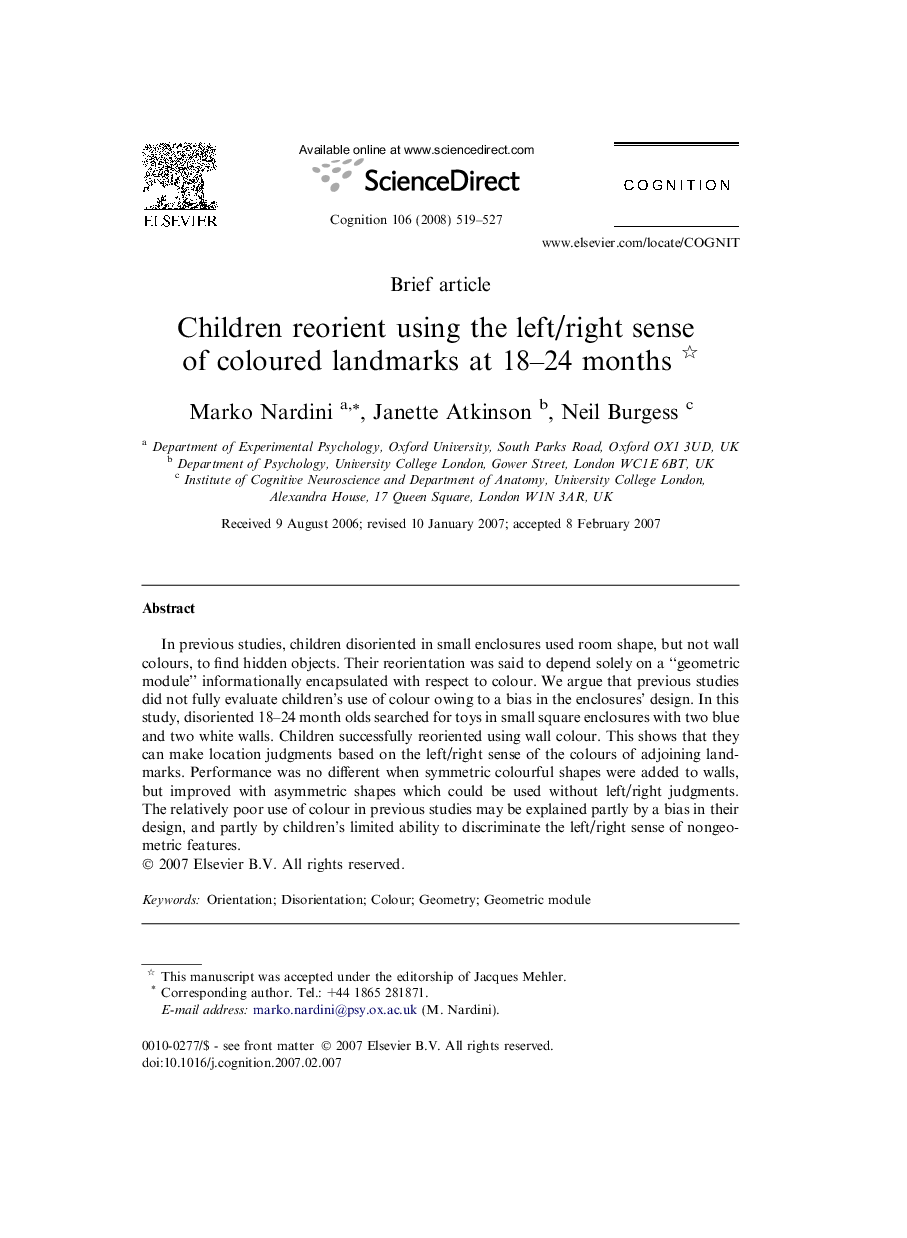| کد مقاله | کد نشریه | سال انتشار | مقاله انگلیسی | نسخه تمام متن |
|---|---|---|---|---|
| 927448 | 921980 | 2008 | 9 صفحه PDF | دانلود رایگان |

In previous studies, children disoriented in small enclosures used room shape, but not wall colours, to find hidden objects. Their reorientation was said to depend solely on a “geometric module” informationally encapsulated with respect to colour. We argue that previous studies did not fully evaluate children’s use of colour owing to a bias in the enclosures’ design. In this study, disoriented 18–24 month olds searched for toys in small square enclosures with two blue and two white walls. Children successfully reoriented using wall colour. This shows that they can make location judgments based on the left/right sense of the colours of adjoining landmarks. Performance was no different when symmetric colourful shapes were added to walls, but improved with asymmetric shapes which could be used without left/right judgments. The relatively poor use of colour in previous studies may be explained partly by a bias in their design, and partly by children’s limited ability to discriminate the left/right sense of nongeometric features.
Journal: Cognition - Volume 106, Issue 1, January 2008, Pages 519–527